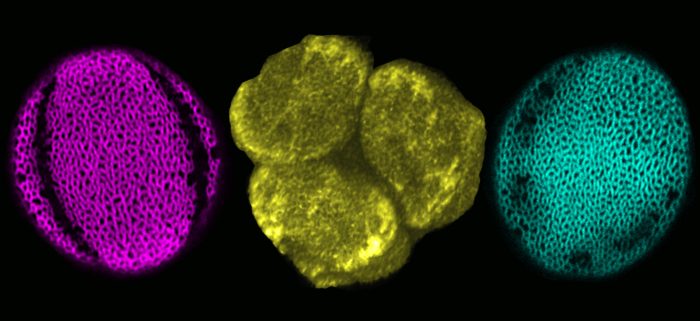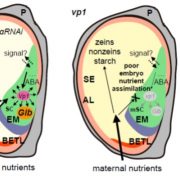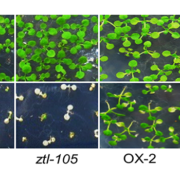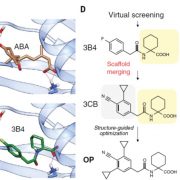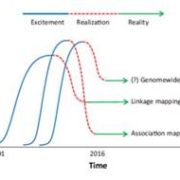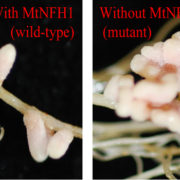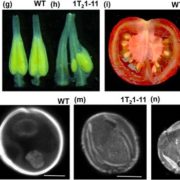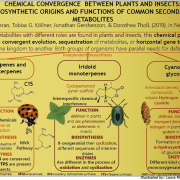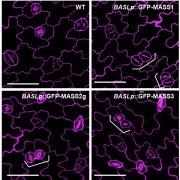Exploring Pollen Patterns to Learn How Cells Create Distinct Domains
Lee et al. identify a protein involved in pollen aperture development and the formation of distinct membrane domains in microspores. https://doi.org/10.1105/tpc.18.00442
By Byung Ha Lee and Anna Dobritsa
Background: Pollen grains are famous for their ability to develop various intricate patterns on their surfaces. One type of patterns common to the pollen grains of most plant species are apertures, the sites on the pollen surface that are not covered by the pollen wall. Presence of apertures shows that the pollen surface is not uniform, that pollen is able to make specific areas that are different from other nearby sites.
Question: We use pollen apertures to study how cells create distinct areas (known as domains) on their surface. Before this study, a protein called INP1 from the plant Arabidopsis was the only molecular factor known to be involved in formation of apertures. However, it was becoming increasingly clear that it cannot be the only player in this process. Our goal was to find additional proteins that control formation of aperture domains, and to understand the role of these proteins in domain formation.
Findings: By looking at many natural strains of Arabidopsis, we discovered one strain in which apertures were not developing properly. We identified the mutation responsible for this and found that it affected the gene called D6PKL3. The D6PKL3 gene encodes a protein that adds phosphate groups to other proteins. Excitingly, we found that during pollen development the D6PKL3 protein gathers at the aperture domains, and that D6PKL3 is required to attract the INP1 protein to the same sites. We also showed that unlike INP1, which does not control the number or positions of apertures, D6PKL3 seems to be able to do so. This difference suggests that D6PKL3 acts earlier in the process of aperture formation than INP1.
Next steps: We still do not know which proteins become phosphorylated by D6PKL3 during the process of aperture formation (INP1 does not seem to be one of them). We also do not understand what attracts D6PKL3 to the sites that will become apertures. Also, patterns of apertures (their number, shape, and position) vary tremendously between different species. The challenge will be to understand how pollen grains from different species develop apertures that look different.
Byung Ha Lee, Zachary T. Weber, Melina Zourelidou, Brigitte T. Hofmeister, Robert J. Schmitz, Claus Schwechheimer, Anna A. Dobritsa. (2018). Arabidopsis Protein Kinase D6PKL3 Is Involved in the Formation of Distinct Plasma Membrane Aperture Domains on the Pollen Surface. Plant Cell 30: 2038-2056; DOI: https://doi.org/10.1105/tpc.18.00442
Key words: pollen, apertures, cellular domains.


